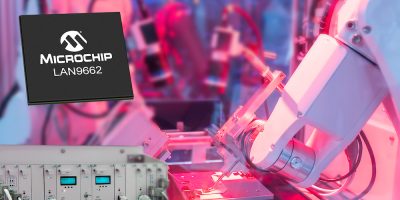The next generation of RealWear’s hands-free, wearable computers for frontline workers is the Navigator Z1 Intrinsically Safe (IS) headset, which accesses AI and 5G connectivity.
Built for productivity and safety in industries such as oil and gas, pharmaceuticals, and mining, the hands-free IS wearable solution frees a worker’s hands to make operations smarter, safer, and more efficient.
The Navigator Z1 is certified for use in areas where nearly all electronics are strictly prohibited due to the potential risk of explosion or combustion. It can be used on sites including oil and gas production areas, for rig inspections at sea or for repair in mission-critical production equipment in processing mills, chemical facilities, and mines.
It is “the smartest and lightest IS wearable with integrated battery available to frontline workers who work in some of the most challenging sites on earth,” said Dr. Chris Parkinson, co-founder and CEO of RealWear. “We’re especially keen to introduce AI Core and 5G IS connectivity to create a new frontier of smart, connected wearable solutions for frontline workers,” he added.
Technical improvements in this version of the headset includes the introduction of RealWear’s new AI Core, especially designed for on-device enhanced AI experiences. The headset is also lighter than earlier models but retains the ruggedness and durability levels, said RealWear. There is also improved screen visibility with an HD 720p display and a high resolution front-facing camera (48 Mpixel) for better remote collaboration and low-light image capture for inspections and auditing.
The headset has a wide temperature range for use in more climates and environments, enhanced noise cancellation for improved voice-responsiveness and accuracy and improved connectivity with faster Wi-Fi 6 and an optional 5G IS solution for private and secure enterprise connectivity.
There is also a thermal camera module to spot invisible issues before they become critical and a removable integrated snag-free battery for enhanced safety and for extended use. The headset operates with Enterprise Secure Android 12.
RealWear Navigator Z1 capabilities include purpose-built software for remote expert guidance and training. Remote experts can conduct in-the-moment maintenance and repair, potentially reducing costly travel and downtime via apps like Microsoft Teams and Zoom.
Using just simple voice commands, workers can connect to FSM (field service management) enterprise AI systems to handle work orders safely and quickly, and conduct asset maintenance at reduced operational costs.
Inspectors can inspect a job site, take high quality photos and dictate notes using the field data collection component of an inspection data management system (IDMS) such as hands-free solutions from RealWear and HUVR. Captured data is instantly uploaded and geocoded for integrity verification, auditing and compliance purposes.
Device administrators can access RealWear’s enterprise-grade RealWear Cloud web portal to add approved apps to the headset, adjust a variety of settings, and even remotely connect to the headset to offer remote device troubleshooting.
To take full advantage of the powerful Qualcomm 6490 chipset, RealWear has begun to offer early access of the new headset to its global developer community.
“We’re thrilled that RealWear is utilising the Qualcomm 6490 platform in RealWear Navigator Z1 that will help frontline workers in extremely hazardous zones where rugged equipment and safety is essential,” said Jeff Henckels, director of XR Product Management, Qualcomm Technologies. “The Qualcomm 6490 is a perfect fit for RealWear’s next generation headsets as it enables powerful connections and reduced latency, an advanced ISP and advanced Edge-AI computing to deliver astonishing performance at lower power.”
The headset will launch with certifications for ATEX Zone 1, CSA C1/D1 and IECEx.






